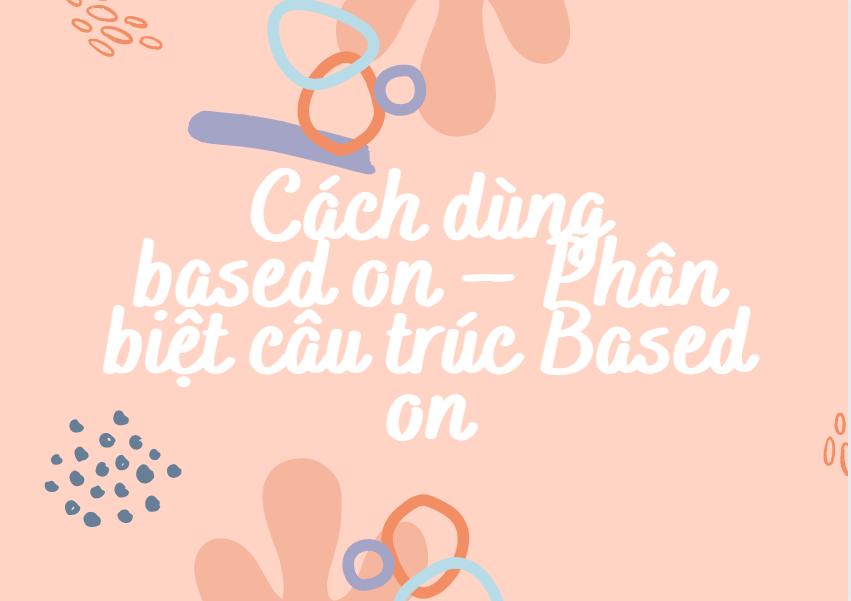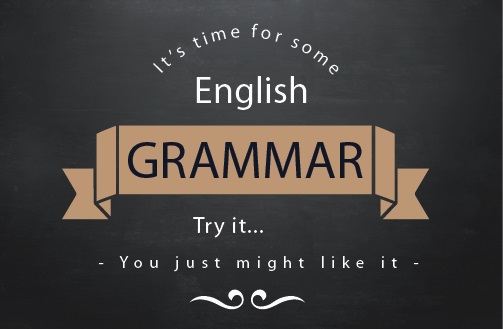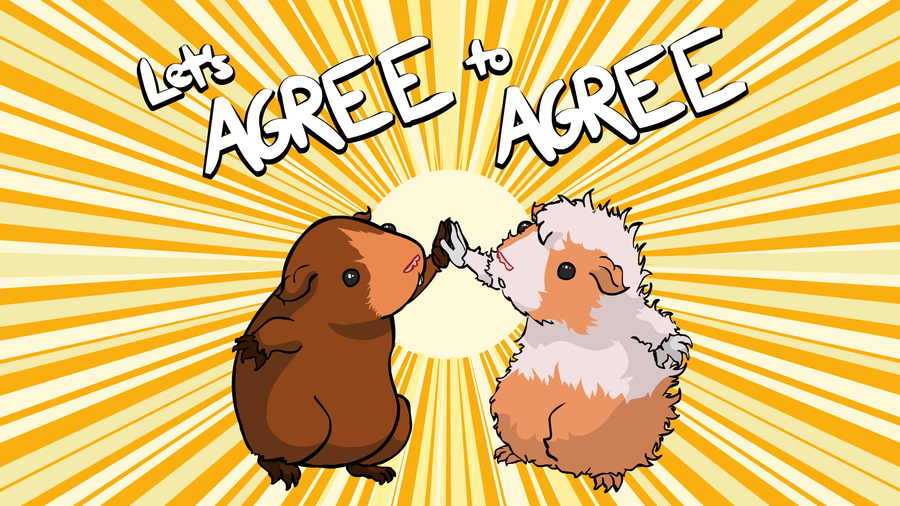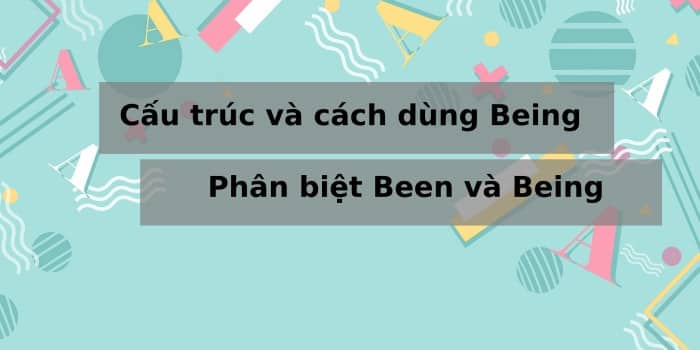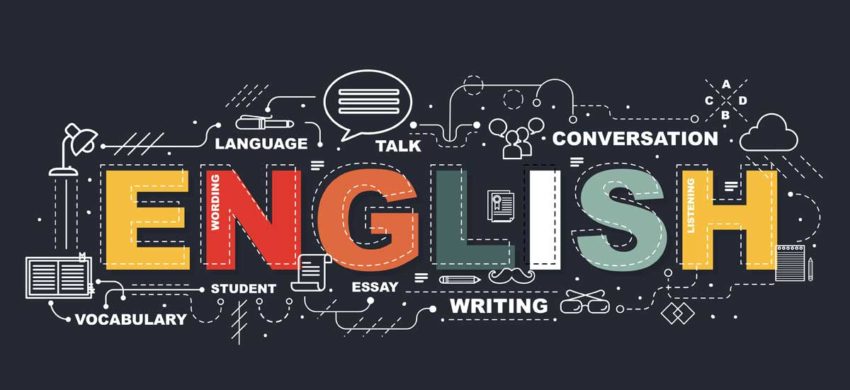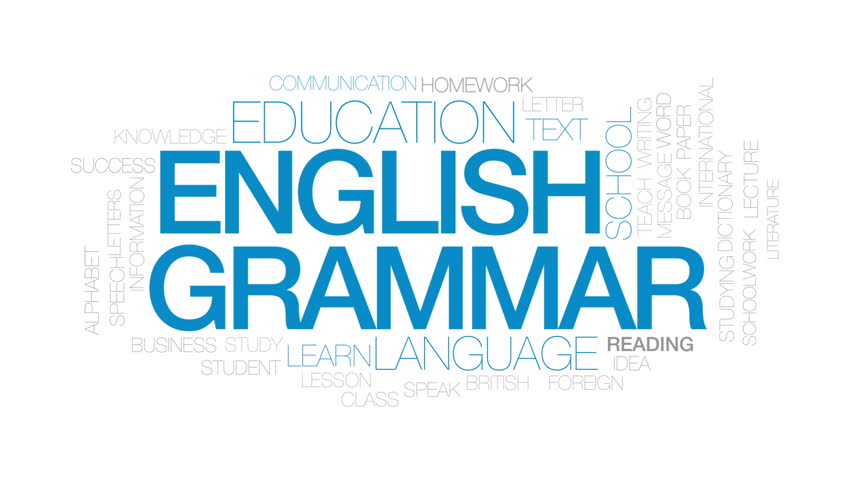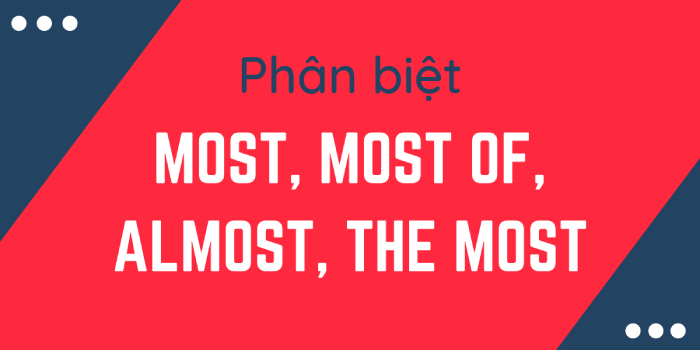Câu tường thuật là một điểm ngữ pháp quan trọng trong tiếng Anh, xuất hiện nhiều trong các bài thi và kiểm tra. Vậy làm sao để nắm rõ các dạng câu hỏi và bài tập hay xuất hiện về Câu tường thuật trong tiếng Anh?
Hôm nay tienganhduhoc.vn sẽ cung cấp đến các bạn các dạng câu hỏi và bài tập cơ bản, nâng cao về câu tường thuật hay xuất hiện trong bài thi để các bạn luyện tập thêm.
1. Câu tường thuật tiếng anh là gì?
Chúng ta cùng ôn lại một số kiến thức cơ bản về câu tường thuật trước khi bước vào các dạng câu hỏi cũng như bài tập nhé!
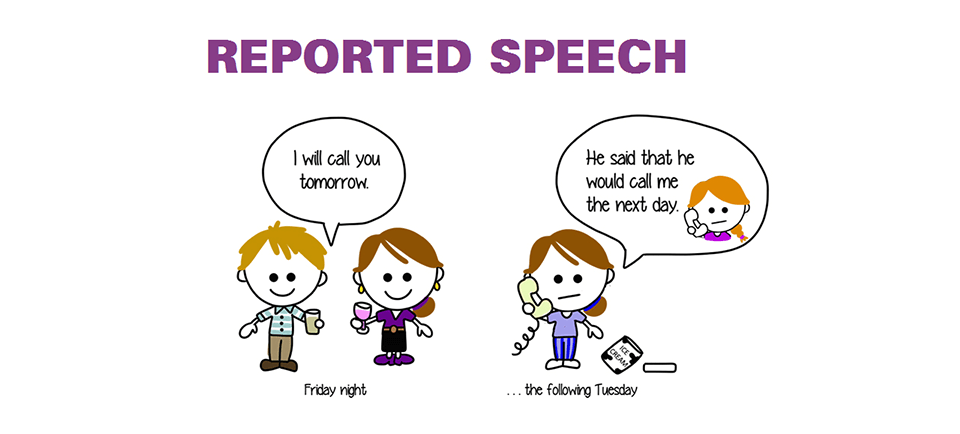
Câu tường thuật trong tiếng Anh gọi là Reported Speech, là loại câu gián tiếp dùng để thuật lại lời nói hoặc một câu chuyện của một người khác. Hay nói đơn giản là chuyển từ câu trực tiếp sang câu gián tiếp bằng hình thức tường thuật.
2. Các dạng câu hỏi và bài tập về câu tường thuật trong tiếng Anh
2.1. Dạng 1: Chuyển câu trực tiếp sang gián tiếp
2.1.1. Các loại câu tường thuật trong tiếng Anh cơ bản
Ở mức căn bản, chúng ta có 3 loại câu tường thuật đó là câu tường thuật của câu phát biểu, câu tường thuật dạng câu hỏi và câu tường thuật câu mệnh lệnh.
Loại 1: Câu tường thuật của câu phát biểu
Cấu trúc câu: S + say(s)/said hoặc tell/told + (that) + S + V
Đây là loại câu tường thuật trong tiếng anh thông dụng, thường để thuật lại những lời nói, câu chuyện của một người khác đã nói. Có 4 bước để tạo ra câu tường thuật ở loại này
Bước 1: Chọn động từ giới thiệu say hoặc tell (Quá khứ: Said hoặc told)
Lưu ý: Động từ giới thiệu trong câu gián tiếp thường được chia ở thì quá khứ và liên từ “that” có thể được lược bỏ
Ex: He told her (that) he didn’t love her anymore
Bước 2: Các lùi thì trong câu tường thuật
Thông thường chúng ta sẽ lùi một thì so với thì được sử dụng trong câu trực tiếp. Các bạn xem chi tiết trong bảng dưới đây.
| Tường thuật trực tiếp | Tường thuật gián tiếp (tương đương) |
| Simple present (Hiện tại đơn) | Simple past (Quá khứ đơn) |
| Present continuous (Hiện tại tiếp diễn) | Past continuous (Quá khứ tiếp diễn) |
| Simple past (Quá khứ đơn) | Past perfect (Quá khứ hoàn thành) |
| Present perfect (Hiện tại hoàn thành) | Past perfect (Quá khứ hoàn thành) |
| Past perfect (Quá khứ hoàn thành) | Past perfect (Quá khứ hoàn thành) |
| Present perfect continuous (Hiện tại hoàn thành tiếp diễn) | Past perfect continuous (Quá khứ hoàn thành tiếp diễn) |
| Past continuous (Quá khứ tiếp diễn) | Past perfect continuous (Quá khứ hoàn thành tiếp diễn) |
| Future (Tương lai đơn) | Present conditional (Điều kiện ở hiện tại) |
| Future continuous (Tương lai tiếp diễn) | Conditional continuous (Điều kiện tiếp diễn) |
Lưu ý:
Modal verbs:
- Can → Could
- May → Might
- Must → Must/Had to
Không lùi thì với các modal verbs: might, could, would, should, ought to
Không lùi thì khi Động từ tường thuật (say/tell) ở hiện tại hay câu tường thuật chỉ một sự thật hiển nhiên, một chân lý.
Ví dụ: Daniel said, “You can go with him to the university,” → Daniel said I could go with him to the university.
Bước 3: Đổi đại từ nhân xưng, đại từ và tính từ sở hữu
| Trong câu trực tiếp | Trong câu tường thuật | |
| Đại từ nhân xưng | I | Đại từ nhân xưng |
| Đại từ sở hữu | Mine Ours Yours | His, hers Theirs Mine, Ours |
| Tính từ sở hữu | My Our Your | His, her Their My, Our |
| Tân ngữ | Me Us You | Him, her Them Me, us |
Lưu ý: khi tường thuật câu nói của chính mình thì các đại từ, tính từ trên không đổi
Bước 4: Đổi các từ chỉ về nơi chốn và thời gian cho phù hợp
Dưới đây là bảng các từ chỉ nơi chốn, thời gian thông dụng nhất trong tiếng anh mà chúng tôi đã tổng hợp lại cho bạn:
| DIRECT (Trực tiếp) | INDIRECT (Gián tiếp) |
| ThisTheseHereNowTodayYesterdayThe day before yesterdayTomorrowThe day after tomorrowAgoThis weekLast weekNext week | ThatThoseThereThen; at the timeThat dayThe day before; the previous dayTwo days beforeThe day after; the next/following dayTwo days after; in two days’ timeBeforeThat weekThe week before; the previous weekThe week after; the following/next week |
Loại 2: Câu tường thuật dạng câu hỏi
Câu tường thuật dạng câu hỏi gồm có 2 loại đó là câu hỏi Yes/No question và Wh-Question
Yes/No Question
Câu hỏi Yes/No question là dạng câu hỏi đơn giản trong tiếng anh, thường bắt đầu bắt động từ TOBE hoặc trợ động từ
Các bước làm vẫn tương tự như câu tường thuật dạng câu phát biểu, tuy nhiên cần lưu ý những điều sau:
- Sử dụng động từ giới thiệu “ask” hoặc inquire, wonder, want to know,.. + liên từ
- Sử dụng “If” hoặc “whether” ngay sau động từ giới thiệu của mệnh đề chính để thể hiện ý nghĩa có hoặc không
S + asked (+object) + if/whether + subject + V
Ví dụ: He said, “Do you like strawberry?” (Anh ấy nói, “Bạn có thích dâu không?”)
→ He asked me if/whether I like strawberry. (Anh ấy hỏi tôi là tôi có thích dâu không.)
Wh-Question
Câu tường thuật dạng câu hỏi Wh- là loại câu bắt đầu bắt các từ nghi vấn như Who, When, What,… Cách làm vẫn tương tự như 4 bước chuyển sang câu mệnh lệnh trong tiếng anh, tuy nhiên cần lưu ý những điều sau:
- Lặp lại từ để hỏi sau động từ giới thiệu
- Đổi trật tự câu thành câu trần thuật
S + asked (+Object) + What/When/… + Subject +Verb
Ví dụ: My mother said, ‘What time do you go to the bed?’ (Mẹ tôi nói, “Mấy giờ bạn sẽ đi ngủ?”)
My mother want to know what time I go to the bed. (Mẹ tôi muốn biết mấy giờ tôi sẽ đi ngủ)
Loại 3: Câu tường thuật dạng câu mệnh lệnh
- Câu tường thuật loại câu mệnh lệnh khẳng định cấu trúc như sau: S + told + O + to-infinitive.
Ví dụ: – “Please call me, Mary.” Tom said. (“Hãy gọi tôi, Mary”, Tom nói)
Tom told Mary to call him (Tom bảo Mary hãy gọi cho anh ấy)
- Câu tường thuật loại câu mệnh lệnh phủ định có dạng: S + told + O + not to-infinitive.
Ví dụ: “Don’t eat in bus!” the driver said. (“Không ăn trên xe buýt”, tài xế nói)
The driver told the passengers not to eat in bus (Tài xế nói với những người hành khách không ăn trên xe buýt)
Một số động từ phổ biến khi tường thuật câu mệnh lệnh: tell, ask, order, advise, warn, beg, command, remind, instruct, ….
- Câu tường thuật ở dạng câu điều kiện ở lời nói gián tiếp:
a. Điều kiện có thật, có thể xảy ra (đk loại 1)
Chúng ta áp dụng quy tắc chung của lời nói gián tiếp (lùi thì)
Ví dụ: He said,”If I have much money, I’ll travel around the world.” -> He said (that) If he had much money, he would travel around the world.
b. Điều kiện không có thật/giả sử (đk loại 2, loại 3)
Chúng ta giữ nguyên,không đổi.
Ví dụ: ”If I had two wings, I would fly everywhere”, he said -> He said If he had two wings, he would fly everywhere.
2.2. Dạng 2: Chuyển câu trực tiếp sang gián tiếp dạng nâng cao
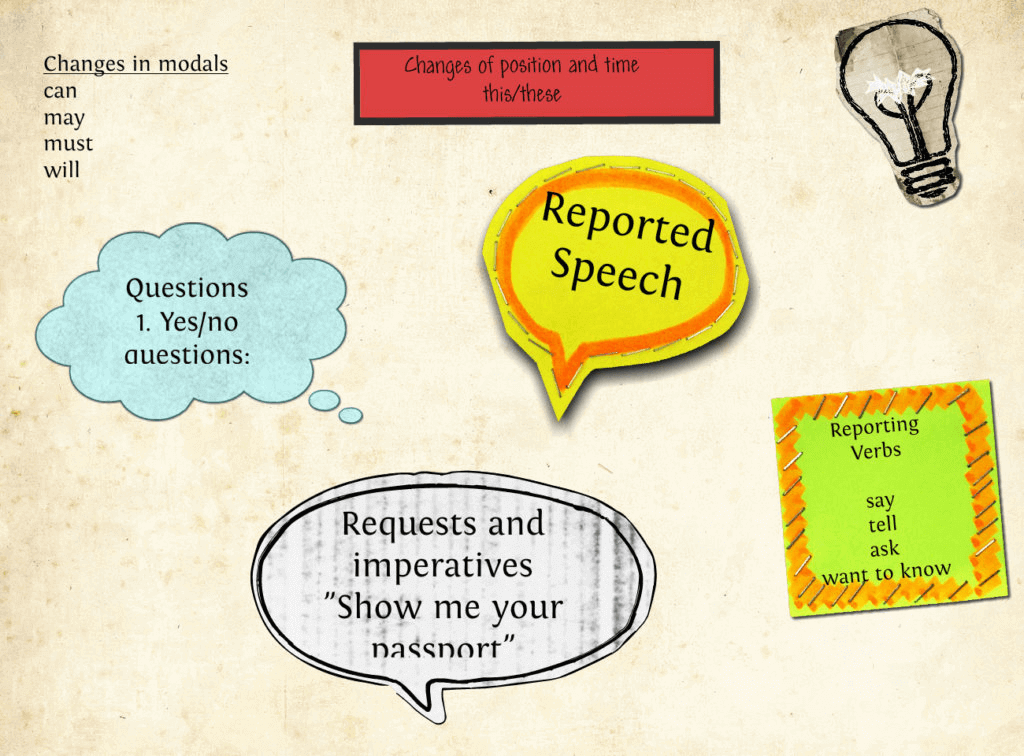
Trong phần này nên nhớ cách sử dụng của giới từ sau động từ, các dạng động từ V-ing hay To V và nhận dạng các loại câu dựa vào sắc thái nghĩa.
1. Câu gián tiếp với WARN: Cảnh báo
S+ warned+ sb+ to V/ not to V + O
Hoặc S + Warned sb against V-ing: cảnh báo ai làm (không làm) gì
Ex: “Don’t play ball near the restricted area.” I said to the boy
–> I warned the boy not to play ball near the restricted area / against playing ball near the restricted area
2. Câu gián tiếp với ADVICE: Lời khuyên
S+ should/had better/ought to + V
If I were you, I would + V…
Why don’t you + V?
–>S + advised + sb +to Vo/not to Vo khuyên ai đó nên (không nên ) làm gì.
Ví dụ: “You should drink more water,” The doctor said to her.
–> The doctor advised her to drink more water.
“If I were you, I wouldn’t buy that book,” my friend said.
–> My friend advised me not to buy that book.
3. Câu gián tiếp với PROMISE: Lời hứa
S+ will/won’t + V
–>S + promised +sb + to + V / not to V: hứa làm gì
Ví dụ: ” I will never do this again,” He said to her.
–> he promised her not to do that again.
4. Câu gián tiếp với INVITE: Lời mời
S+ invited sb+ to V/ to+danh từ/danh từ (địa điểm): mời ai đó làm gì hoặc đến đâu.
Ví dụ: Ann said: “Come to my place whenever you are free.”
→ Ann invited me to come to her place whenever I was free.
5. Câu gián tiếp với THREATEN: Đe dọa
S+ threatened (sb)+to V/ not to V : đe doạ (ai) làm gì
Ví dụ: He said, ” I will kill you if you don’t do that “-
–> He threatened to kill me if I didn’t do that.
6. Câu gián tiếp với SUGGEST: Lời đề nghị
- Shall we+ V…
- Let’s+ V…
- How/What about+ Ving…
- Why don’t we + V…
–>S+ suggested+ Ving= S+ suggested+ that+ S+ should/shouldn’t+ V Đề nghị làm gì hoặc điều gì nên được làm.
Ví dụ: ” Why don’t we go out for a walk?” said the boy.
→ The boy suggested going out for a walk.
7. Câu gián tiếp với EXCLAIM: Câu cảm thán
How + adj +S + tobe!
What +a/an +adj +DT!
—>S+exclaimed + that+ S+ V(lùi thì) + O
Ví dụ: He said, “What a lovely garden they have!”
–> He exclaimed that they had a lovely garden.
“How dreadful!” (Đáng sợ quá!)
–> He exclaimed that it was dreadful.
8. Câu gián tiếp với WISH: Cầu chúc
S+ wished+ sb+ (a/a) + adj+DT: chúc ai đó có được điều gì
Ví dụ: ” Have a happy birthday” she said.
-> she wished me a happy birthday.
9. Câu gián tiếp với CONGRATULATE: Chúc mừng
- S+ congratulated+ sb + a/an+ adj
- S+ congratulated+ sb+ on+ Ving : chúc mừng ai vì điều gì
Ví dụ: “I’m happy to know that you win the game. Congratulations!”, Jim said to Mary.
–> Jim congratulated Mary on winning the game.
10. Câu gián tiếp với WELCOME: Chào mừng, chào đón
S + welcomed + sb/st + to + địa điểm: chào đón ai đến với.
Ví dụ: ” Welcome to my house, my dear,” she said to her friend.
–> She welcomed her friend to her house.
11. Câu gián tiếp với ACCUSE : buộc tội ai
S+ accused+ sb+ of (not)+ Ving
Ví dụ: ” You stole my bike “. He said.
–> He accused me of stealing/having stolen his bike.
12. Câu gián tiếp với AGREE : đồng ý
S+ agreed+ to V: đồng ý làm gì
Ví dụ: Ann: ” Would you wait for half an hour.? “Tom: ” All right”.
=> Tom agreed to wait.
13. Câu gián tiếp với ADMIT : thừa nhận
S+ admitted+ Ving: thừa nhận đã làm gì
Ví dụ: “I’ve made the wall dirty,” said one student.
–> One student admitted making the wall dirty.
14. Câu gián tiếp với DENY: phủ nhận
S+ denied+ Ving: phủ nhận đã làm gì
Ví dụ: Peter said: “I didn’t steal the painting.”
-> Peter denied stealing the painting.
15. Câu gián tiếp với REFUSE: từ chối
S+ refused+ to V : từ chối làm gì
Ví dụ: Ann: “Would you lend me another £50? “Tom: ” No, I won’t lend you any more money”.
=> Tom refused to lend her any more money.
3. Bài tập về câu tường thuật, có kèm đáp án
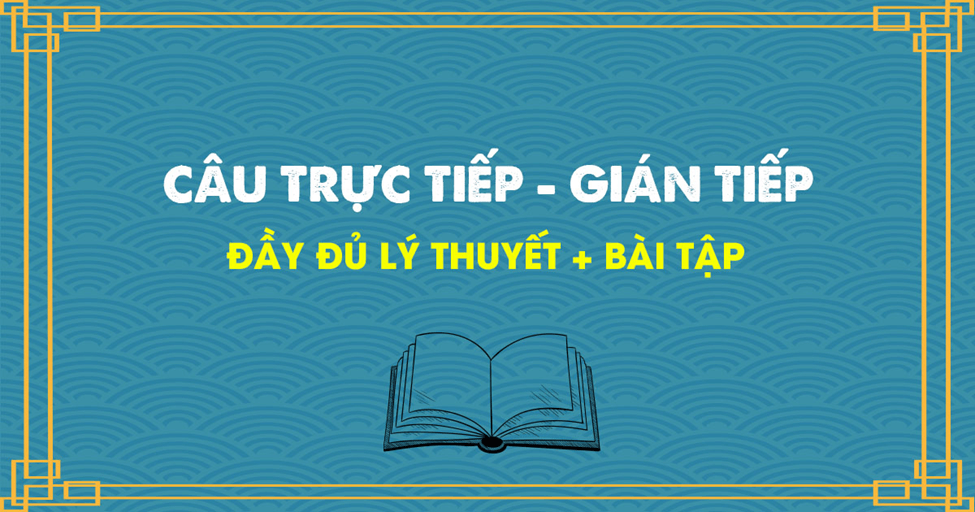
Viết lại đúng các câu sau bằng cách sử dụng cấu trúc câu tường thuật
1. “Please download the information from this file,” the director said to us.
The director told us ………………………………………………………
2. “Where is the cake which I just made?” Her mother asked her.
Her mother asked her where ……………………………………
3. “Which way are you planning to go to the beach?” Mary asked us
Mary asked us which …………………………………………….
4. “Please bring that outfit over here if it has any damage.” the clerk said to Lisa.
The clerk told Lisa………………………………………………………
5. “Don’t come to my house without prior notice.” May’s colleague said to her.
May’s colleague told her ……………………………………………………
6. “Can you do this project best?” My manager told me
My manager told me ………………………………..
7. Jimin’s girlfriend said, “My boyfriend is a very polite and courteous person so I love him very much.”
Jimin’s girlfriend said that ……………………………………..
8. “Is there any restroom nearby?” the customer asked me.
The customer asked me ………………………………..
9. Jenny said to him: “Please lend me your car to carry this cargo to the train station because my dad needs it right now.”
Jenny asked him …………………………..
11. “Don’t stay up late, Jisoo,” Jisoo’s mother said to her.
Jisoo’s mother told her ……………………………..
12. “Tim, did you see the water bottle which I just bought?” Tim’s roommate asked.
Tim’s roommate asked him ………………………………………………
13. “Don’t do anything worse, Jane.” Jane’s brother said to her.
Jane’s brother told her …………………………………….
14. She said: “I’ll take you to school tomorrow, Jack.”
She told Jack…………………………………….
15. “If you accept to take this survey, we will give you a discount coupon.” The seller said to us.
The seller told us …………………………………………………………..
16. “What do you plan to buy for your girlfriend’s birthday?” Tom asked me
Tom asked me ……………………………………………………………
17. “I will get back to you as soon as possible,” the clerk said to him.
The clerk told him …………………………………………….
18. “Can I borrow your phone, Mina?” Mina’s colleague asked her
Mina’s colleague asked her ……………………………………
19. “I want lots of people to come to my birthday party.” My brother said to me
My brother told me ………………………………………………………….
20. “Don’t drink that glass of water because it’s brandy.” Lisa’s boyfriend said to her.
Lisa’s boyfriend told her ………………………………………………….
21. “How long are you planning to study in Australia?” my roommate asked
My roommate asked me …………………………………………………
22. “Are you planning to go to school by train?” Britain’s mother asked him
Britain’s mother wanted to know………………………………………………
23. “Don’t turn on the indoor heater when nobody is there.” March’s mother said
March’s mother told him …………………………………………………….
24. “Will you come to the concert to see my show?” my neighbor asked me
My neighbor invited me …………………………………………………
25. “Don’t drive when you’re on the phone.” Mary’s father said to her.
Mary’s father told her …………………………………………….
26. “Did the doctor come to see you yesterday?” My mother asked
My mother asked me…………………………………………..
27. “Don’t step on the grass.” the neighbor said to me
The neighbor told me ……………………………
28. “What do you want to cook for breakfast, mommy?” Kate asked
Kate asked her mother …………………………….
29. “Can I use your computer, Peter?” Peter ‘s sister asked him
Peter’s sister asked him …………………………………..
30. “Why didn’t I have my name on the record?” The customer asked
The customer wondered…………………………………………..
31. “You have better do well everything that your boss requested, Anna,” John said.
John advised Anna ………………………………………………………..
Đáp án
1. The director told us to download the information from that file.
2. Her mother asked her where the cake was which she just had made.
3. Mary asked us which way we were planning to go to the beach.
4. The clerk told Lisa to bring that outfit over there if it had any damage.
5. May’s colleague told her not to come to her house without prior notice.
6. My manager told me if I could do that project best.
7. Jimin’s girlfriend said that he was a very polite and courteous person so she loved him very much.
8. The customer asked me if there any restroom nearby was.
9. Jenny asked him to lend her his car to carry that cargo to the train station because her dad needed it right then.
10. Jisoo’s mother told her not to stay up late.
11. Tim’s roommate asked him if he had seen the water bottle which she had just bought.
12. Jane’s brother told her not to do anything worse.
13. She told Jack that she would take him to school the next day.
14. The seller told us they would give us a discount coupon if we accepted to take that survey.
15. Tom asked me what I planned to buy for my girlfriend’s birthday.
16. The clerk told him that she would get back to him as soon as possible.
17. Mina’s colleague asked her if she could borrow her phone.
18. My brother told me that he wanted lots of people to come to his birthday party.
19. Lisa’s boyfriend told her not to drink that glass of water because it was brandy.
20. My roommate asked me how long I was planning to study in Australia.
21. Britain’s mother wanted to know if he was planning to go to school by train.
22. March’s mother told him not to turn on the indoor heater when nobody was there.
23. My neighbor invited me to come to the concert to see her show.
24. Mary’s father told her not to drive when she was on the phone.
25. My mother asked me if the doctor had come to see me the day before.
26. The neighbor told me not to step on the grass.
27. Kate asked her mother what she wanted to cook for breakfast.
28. Peter’s sister asked him if she could use his computer.
29. The customer wondered why he hadn’t had his name on the record.
30. John advised Anna to do well everything that her boss had requested.
Câu tường thuật là một phần trong ngữ pháp căn bản trong tiếng Anh, vì thế bạn cần nắm rõ. Và nếu bạn đang học ngữ pháp tiếng Anh căn bản thì mình xin gợi ý cho bạn một trang web học tiếng Anh miễn phí chất lượng là Khoaquocte.vn – Đây là website chia sẻ các kiến thức về từ vựng, ngữ pháp học tiếng Anh. Đồng thời còn là nơi hướng nghiệp giúp các bạn học sinh, sinh viên chọn được nghề nghiệp phù hợp với bản thân.
Trên đây là toàn bộ kiến thức về các dạng câu hỏi và bài tập về Câu tường thuật chi tiết nhất mà tienganhduhoc.vn đã tổng hợp. Câu tường thuật là điểm ngữ pháp tiếng anh rất quan trọng trong tiếng Anh, vì vậy mà các bạn nên luyện tập thường xuyên. Chúc các bạn học tốt!

